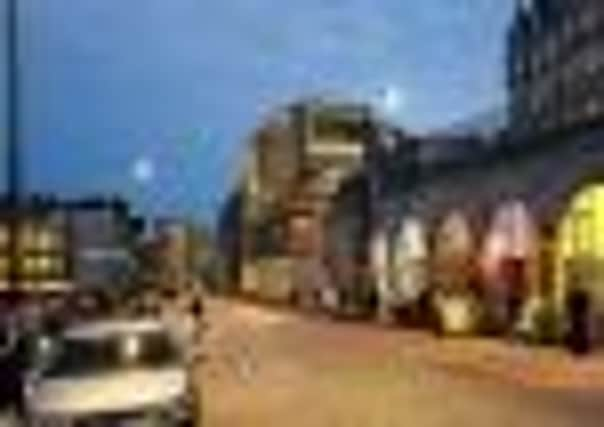Malcolm Fraser: Fear is the key and as a result bold plans are compromised


There is a viable Word Bank proposal for its use as a community arts and social enterprise hub and I hope that Artisan, the new developers, go on to work with its promoters, the Old Town Development Trust.
I’m pleased because I’ve lobbied for its retention. Indeed our refusal to contemplate its demolition, when we were in competition with Allan Murray Architects for the masterplanning of the whole site, must have contributed to us not being chosen.
Advertisement
Hide AdAdvertisement
Hide AdThe proposals have been welcomed as representing a triumph for “compromise” – and, yes, the retention of this decent old stone building is the positive side of compromise, as in doing the right thing.
But then the new Caltongate has also been welcomed for being the “low rise” that suits it’s location, and for the “wide open vistas” it retains – such criticism being directed at our proposals for the last developers, on the Jeffrey Street portion of the site, that have been reduced, in these new ones, to a wee glass blob.
Low rise… and wide open vistas… in the Old Town? I am writing this in my North Bridge eyrie, an 11-storey high-rise less than 200 metres from Jeffrey Street. Our proposal was for six storeys to mark this important historic gateway to the Old Town and, in addition to it being half the height of my office the tenement which once stood here, as shown in the 1819 print, was taller, at seven storeys.
The print looks up along the City Wall, from around the front door of the new Council headquarters towards the Netherbow Port and the Royal Mile junction with the modern St Mary and Jeffrey Streets. This narrow view and route out was the first connection north from the dense, contained High Street and was a hugely significant route, the Royal “Via Regia” before becoming Leith Wynd.
The Victorians demolished all this; and while, at Cockburn and Victoria Streets, they very beautifully restitched their Old Town “improvements” back into the surviving medieval fabric, they failed at Jeffrey Street, leaving a dull, undifferentiated roofline (as opposed to the vigorous, raggedy one of the rest of the Old Town), some weak gables and a lonely wee car park.
Our Leith Wynd proposals – in the other image, above and behind the arches – recovered all that vigour, reintroducing the Wynd in a broad, lively stair down, providing vigorous uses at all levels and into the arches, containing the view (narrowed from that left by Victorian demolition but much wider and more connected than the medieval one), forming a high-level public square with dramatic views over the New Town and out to sea, and recovering the vigorous roofline.
It’s a great shame that the heritage and community lobbies have fought so hard – and with apparent success – to retain the low rises and wide-open vistas of Victorian demolition, and against the recovered medieval density and public bustle of our proposal. So, there’s compromise as doing the right thing, and compromise as timidity. Do we think, for a moment, that it was timidity that has built this great, dramatic Edinburgh?
• Malcolm Fraser is head of Malcolm Fraser Architects.